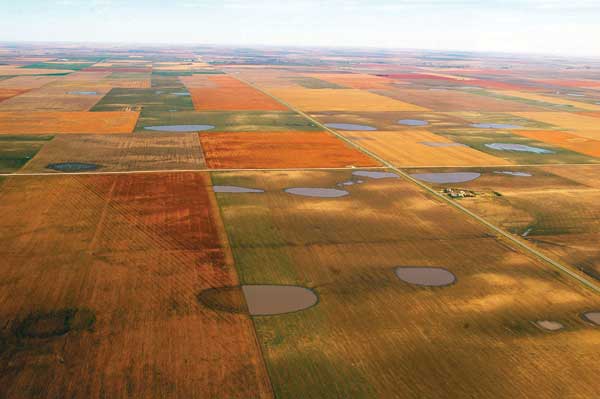Possibly more than any other climate catastrophe is the specter of drought. It is true that a hotter climate pumps more moisture into the atmosphere, and does bring more rain. But the extreme climate fluctuations cause more severe storms not necessarily where rain is needed. By the same token, more severe drought is tending to scorch areas where rainfall has diminished. Storms and flooding certainly can inflict immediate destruction, but drought desiccates entire regions for extended periods, killing ecosystems and economic systems both.
As drought is becoming more widespread – in the Pacific Northwest, the Amazon basin, Central America, the Sahel in Africa, Mongolia – a recent study published in Science Advances is predicting a 21st Century drought in the U.S. southwest and the High Plains, possibly for 100 years – US faces worst droughts in 1,000 years, predict scientists.

The Ogallala Aquifer, also known as the High Plains Aquifer, underlies an estimated 174,000 square miles of the Central Plains, mostly under Nebraska, Kansas, Oklahoma, and Texas, but also areas in New Mexico, Colorado, Wyoming, and South Dakota. The Ogallala is one of the largest underground freshwater sources in the world, holding as much water as Lake Huron. These agricultural states are already experiencing drought, prompting farmers to pump the Ogallala Aquifer at an alarming rate.

But as 60 years of pumping have pulled groundwater levels down by scores of feet, as much as 250 feet in southwest Kansas, most of the creeks and rivers that once veined the land have dried up. Throughout the 20th Century, the US Geological Survey estimates irrigation depleted the aquifer by 253 million acre-feet, about nine percent of its total volume. The Denver Post analyzed federal data and found that the aquifer shrank twice as fast from 2011 through 2017 as it had over the previous 60 years.
This is not sustainable. Considering the drought, some options are to switch from growing very thirsty corn to more dryland crops like winter wheat, beans, or sunflowers, to rely less on cornfed feedlot cattle, and to adopt no-till methods plus cover crops. But all the same, it still comes down to water. To address the depletion of the Ogallala Aquifer, two counties in far west-central Kansas are exploring natural ways of recharging the aquifer.

An initiative begun in 2016 by the Wichita County Water Conservation Area (WCA) has been awarded $1.4 million by the USDA Natural Resources Conservation Service (NRCS) to study how playa wetland lakes can help recharge the Ogallala – NRCS Awards $1.4 Million to Support Local Water Sustainability Project. Partnering in this effort will be Greely County Conservation District, the Kansas Association of Conservation Districts, the Playa Lakes Joint Venture, and Ducks Unlimited, in a program called the Groundwater Recharge and Sustainability Project (GRASP).
Playas are shallow, circular-shaped wetlands that are primarily filled by rainfall, although some playas found in cropland settings may also receive water from irrigation runoff. Some think that playas are carved by wind, but it’s more likely they are formed by land subsidence – in other words, sinkholes. Playas are ephemeral, filling only from Spring rainfall, and the average size being 3.7 acres. Recent research has revealed that water provided by playa wetlands adds three inches to the level of the Ogallala aquifer each year – Playas – Ephemeral Wetlands of the Great Plains – KU Aquatic Ecology Lab.
According to Abe Lollar, a biologist with Ducks Unlimited, native prairie shortgrass seed mixes are a necessary part of the playa restoration process. The planted grass buffer acts like a natural water filter. Rainwater from surrounding fields runs into the playa and carries sediment and contaminants with it. The shortgrass will stop much of the sediment from entering the playa and improve the quality of the water entering the aquifer. It will also provide habitat and a food source for birds and pollinators.

Playa lakes are arguably the most significant ecological feature in the High Plains, even though they cover only 2 percent of the region’s landscape. Supposedly there are more than 80,000 playas scattered across the Great Plains. The Kansas Geological Survey reported that varied estimates put the number of High Plains playas between 25,000 and 60,000. However University of Kansas researchers recently identified more than 22,000 in Kansas alone. No one has ever tried to count them all – Playas in Kansas and the High Plains.


Recent Comments